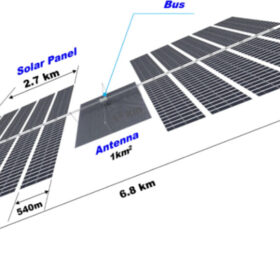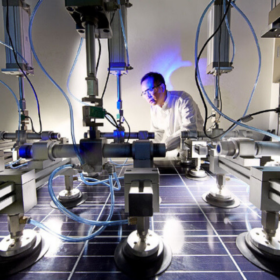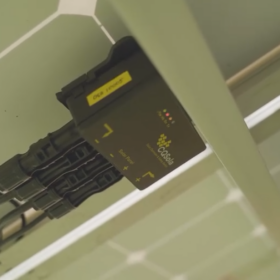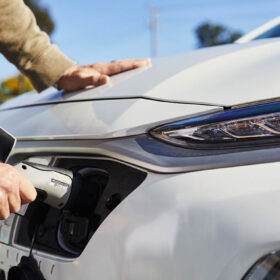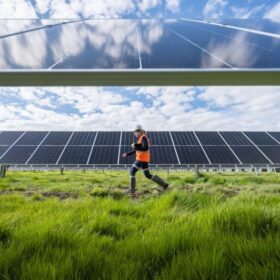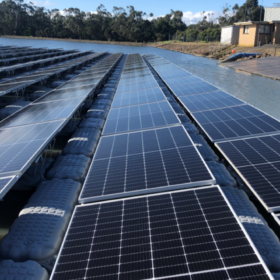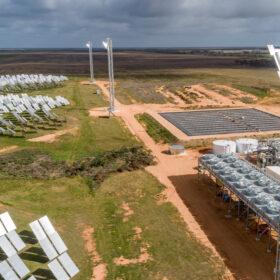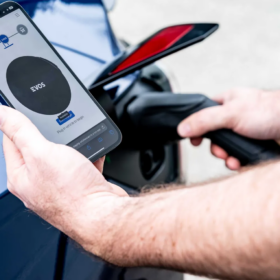South Korea plans 120 GW space solar project
Two Korean research institutes are designing a space solar power satellite project with the aim of providing approximately 1 TWh of electricity to the Earth per year. The proposed system would use 4,000 sub-solar arrays measuring 10 metres × 270 metres and comprising thin film roll-out, with a system power efficiency of 13.5%.
Trina Solar claims 740 W output for TOPCon PV module
The Chinese manufacturer said Germany’s TÜV SUD has confirmed the results.
ANU partners with Aussie startup CQSola on solar-to-hydrogen research
Australian National University researchers will put their heads together with Queensland tech company CQSola to find ways to accelerate commercialisation of a direct solar-to-hydrogen system as part of a newly funded project.
Report shows car batteries can optimise power grid
A report commissioned by the Australian Renewable Energy Agency has found that if 10% of the nation’s vehicles are electric and utilise vehicle-to-grid connections, they could reduce peak electricity demand at local substations by 6% and save car owners hundreds of dollars per year on charging costs.
NSW battery materials company plans U.S. manufacturing plant
Australian battery materials technology company Sicona has confirmed it will develop its first commercial manufacturing facility in the United States as part of its ambition to become the biggest producer of silicon-carbon battery materials in the world.
Pacific Partnerships secures connection approval for 250 MW Queensland solar project
The renewable energy arm of Australian construction and engineering group Cimic says it has received connection approval for the 250 MW Hopeland Solar Farm being developed in Queensland’s Western Downs region.
Soltec launches dual-row, single-axis tracker
Spanish manufacturer Soltec has developed a new dual-row, single-axis tracker with a tracking range of up to 60 degrees, offering compatibility with 60-cell, 72-cell and 78-cell modules.
Victorian water utility launches Australia‘s largest floating solar array
What is being touted as Australia’s largest floating solar system has been activated with water utility Gippsland Water flicking the switch on a 350 kW array deployed atop a wastewater treatment plant in Victoria’s southeast.
RayGen lands new funding to speed up rollout of ‘solar hydro’ tech
Australian solar and storage technology firm RayGen has secured more than $51 million in new funding to accelerate the commercialisation and deployment of its concentrated PV and thermal hydro long-duration energy storage technology.
Evos system designed to accelerate workplace EV transition
A smart phone, an app and new fleet management system are tools of choice for Queensland clean tech startup Evos Energy which has evolved its electric vehicle charging solutions to enable businesses to transition work and staff vehicles to electric.
